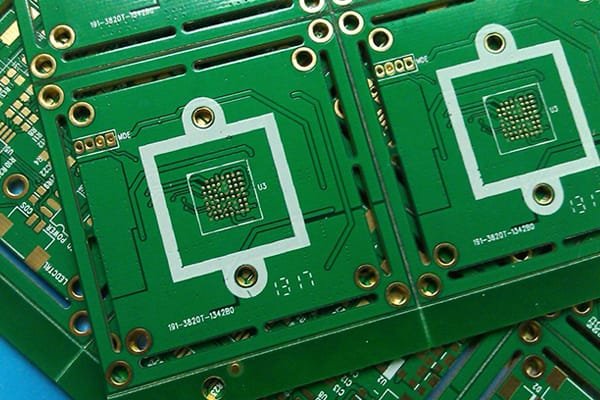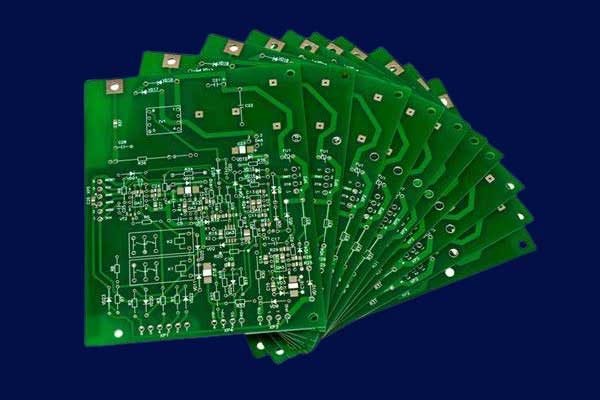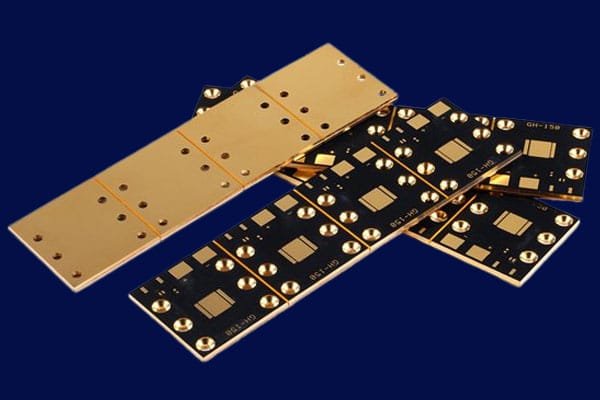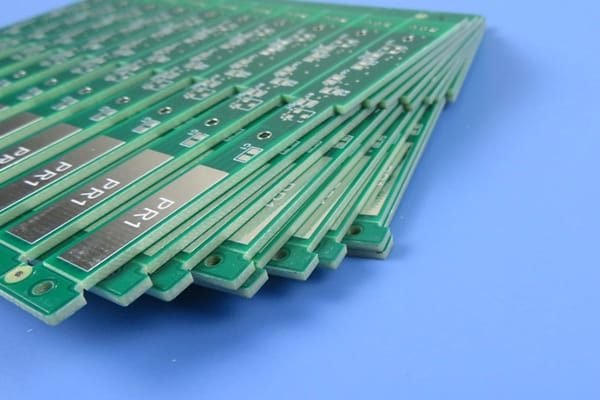PCB Electronic Manufacturing Services
Electroless Nickel/Electroless Palladium/Immersion Gold (ENEPIG) PCB Surface Finish
ENEPIG is one of the common surface treatment processes for PCBs, but in recent years, the ENEPIG process has been applied to gold fingers in wire-bonding optical module products.
What is ENEPIG Process?
ENEPIG (Electroless Nickel/Electroless Palladium/Immersion Gold) is an advanced PCB surface finishing process that provides excellent solderability and oxidation resistance. It is comprised of three consecutive plating steps – electroless nickel plating, electroless palladium plating, and immersion gold plating.
The ENEPIG acronym refers to the plating steps in order:
- EN – Electroless Nickel Plating
- NP – Electroless Palladium Plating
- IG – Immersion Gold Plating
Electroless nickel plating applies a nickel coating of 2-5 μm to the copper traces on the PCB surface. Nickel provides a solderable surface and protects the copper from oxidation and corrosion.
Electroless palladium plating deposits a thin layer of palladium (0.05-0.1 μm) on top of the nickel. Palladium prevents the nickel from oxidizing and enhances solder wettability.
The final step is immersion gold plating, where a flash coating of gold (0.05-0.1 μm) is deposited over the palladium layer. Gold offers excellent oxidation resistance and gives the PCB surface a smooth lustrous finish for improved solderability. The gold also protects the nickel and palladium from oxidation during storage and operation.
By combining the unique benefits of nickel, palladium, and gold plating, ENEPIG provides PCBs with superior surface finish characteristics for demanding electronic applications where high reliability and performance are critical.
Benefits of ENEPIG
The ENEPIG surface finish offers several benefits that make it an excellent choice for high-reliability and high-performance PCBs:
- Superior Solderability
The nickel layer provides excellent wetting characteristics for solders, while the palladium prevents the nickel from oxidizing to maintain solderability over time. The gold layer on the outer surface further enhances overall solder wettability. This gives ENEPIG boards outstanding solderability for even the most demanding component attachments. - Oxidation Resistance
Gold is highly resistant to oxidation and corrosion, effectively protecting the underlying nickel and palladium layers as well as the solder joints. This preserves the solderability of ENEPIG finished boards during operation and storage. - Corrosion Protection
The electroless nickel plating deposits a uniform coating that effectively seals the copper traces on the PCB from moisture and contaminant exposure. This provides excellent corrosion protection for the copper conductors. - Wire Bond Reliability
The gold outer layer with its smooth surface finish is ideal for wire bonding applications, providing reliable wire bonding adhesion. - Long Shelf Life
ENEPIG prevents oxidation of the PCB surface, allowing boards to be stored for long durations without losing solderability performance.
ENEPIG’s unique combination of solderability, anti-oxidation, corrosion resistance, wire bonding capability, and long shelf life make it an exceptional surface finish for advanced PCBs used in high-end electronics.
Applications of ENEPIG
ENEPIG’s superior performance makes it an ideal PCB surface finish for many demanding electronic applications:
- High-Density Interconnect (HDI) PCBs
HDI boards containing fine lines/spaces (<100 μm), microvias (<150 μm) and other delicate features require a reliable PCB finish. ENEPIG provides the excellent solder joint integrity needed for these densely packed boards. - Ball Grid Array (BGA) Packages
BGA components with their tight lead pitches and hidden solder joints underneath are highly sensitive to solderability issues. ENEPIG’s outstanding wetting performance helps ensure reliable solder joints for BGA attachment. - High Frequency and High-Speed Circuits
The smooth gold outer layer, resistance to oxidation, and excellent solderability support the precise impedance control and reliable connectivity required in RF, microwave, and other high-frequency or high-speed circuits. - Harsh Environment
Electronics ENEPIG’s corrosion resistance protects electronics operating in humid, high-temperature, or corrosive environments, preventing premature failure of solder joints. - Automotive Electronics
Meets the extreme temperature cycling, vibration, and reliability requirements of vehicle electronics with its excellent solder joint performance.
In critical applications like aerospace, medical, industrial control, and defense systems where reliability is paramount, ENEPIG is often the surface finish of choice to maintain solder joint integrity over the application lifetime.
ENEPIG Process Steps
The ENEPIG process involves three consecutive plating steps to deposit the nickel, palladium and gold finish on the PCB surface.
Electroless Nickel Plating
- The PCB board is cleaned and activated to catalyze the surface for nickel deposition.
- The board is immersed in an electroless nickel plating solution which deposits a uniform layer of nickel 2-5 μm thick over the copper traces.
- No external power source is required, the nickel ions are auto-catalytically reduced at the board surface.
- The nickel provides solderability, lubricity, and corrosion protection.
Electroless Palladium Plating
- The nickel surface is activated and Pd catalyst is adsorbed onto the surface.
- The board is immersed in an electroless palladium plating bath containing palladium ions.
- The palladium ions are reduced at the catalytic sites to deposit a thin layer of palladium 0.05-0.1 μm thick.
- Palladium prevents oxidation of the nickel layer to maintain solderability.
Immersion Gold Plating
- The PCB board with nickel and palladium deposits is immersed in a solution containing a gold salt.
- The gold ions exchange with the palladium metal to deposit a thin gold layer 0.05-0.1 μm thick on the surface.
- Gold provides oxidation resistance, solderability, and wire bondability.
Rinses are performed between each process step to remove solutions from the board surface and prevent solution dragout. The finished ENEPIG board then undergoes final testing and inspection before shipping.
ENEPIG vs. ENIG vs. Plated Gold: What are the differences?
ENEPIG (Electroless Nickel/Electroless Palladium/Immersion Gold)
- Contains electroless nickel, palladium, and immersion gold layers
- Excellent oxidation resistance
- Best solderability and shelf life
- Most expensive process
ENIG (Electroless Nickel/Immersion Gold)
- Electroless nickel layer with an immersion gold top layer
- Good oxidation resistance
- Better solderability than plated gold
- Moderate cost
Plated Gold
- Only a plated gold layer over copper
- Poor oxidation resistance
- Worst solderability and shelf life
- Lowest cost
Key Differences:
- ENEPIG has 3 layers providing the most complete protection, while ENIG has 2 layers and plated gold just 1 layer.
- The nickel layer provides corrosion protection. ENIG has this, but plated gold does not.
- ENEPIG and ENIG use immersion gold for superior oxidation resistance over plated gold.
- Palladium in ENEPIG further enhances solderability and shelf life beyond ENIG.
- ENEPIG is most expensive but provides the best performance. Plated gold is the lowest cost with least performance.
So in summary, ENEPIG provides the most complete protection and best solderability, while plated gold is the most basic and affordable option. ENIG offers a good middle-ground choice.
Conclusion
In summary, the ENEPIG process is an advanced PCB surface finish that combines the key benefits of electroless nickel, electroless palladium, and immersion gold plating.
The electroless nickel deposit provides excellent solderability and corrosion resistance to the PCB copper traces.
The thin palladium coating prevents oxidation of the nickel layer to maintain long-term solderability.
The outer immersion gold layer gives the surface outstanding oxidation and corrosion resistance while also enhancing overall solder wettability.
Together, these layers give ENEPIG finished boards superior performance characteristics:
- Excellent solderability and joint reliability
- Resistance to oxidation and corrosion
- Long shelf life with no loss of solderability
- Reliable wire bonding ability
- Smooth lustrous finish
With its ability to meet the demanding requirements of high-reliability electronics, ENEPIG has become an increasingly popular finish for advanced PCBs used in consumer, automotive, aerospace, medical, and military applications.
JHYPCB has comprehensive expertise and experience in the ENEPIG process and can provide customers with this advanced surface finish solution to improve PCB performance, lifetime, and reliability.
FAQs on ENEPIG Process
What does ENEPIG stand for?
ENEPIG stands for Electroless Nickel, Electroless Palladium, and Immersion Gold. It is a PCB surface finish consisting of those three consecutive plating layers.
Why is ENEPIG better than other surface finishes?
ENEPIG provides excellent solderability, oxidation resistance, corrosion protection, and wire bondability due to its multi-layer nickel, palladium, and gold plating. It outperforms finishes like ENIG or Hard Gold.
What are the layer thicknesses in ENEPIG?
A typical ENEPIG layer stack has 2-5 μm of electroless nickel, 0.05-0.1 μm of electroless palladium, and 0.05-0.1 μm of immersion gold. This provides optimal functionality.
What are some applications for ENEPIG?
ENEPIG is ideal for high-reliability electronics like aerospace, medical, and military, as well as consumer products like smartphones and tablets. Its excellent solder joint performance suits BGA packages.
Does ENEPIG tarnish or oxidize over time?
No, the gold outer layer protects the nickel and palladium from oxidation or tarnish, giving ENEPIG finishes long shelf lives and solderability.
Is ENEPIG an expensive PCB finish?
ENEPIG costs more than basic finishes like OSP or Hard Gold due to its multi-layer plating, but provides superior reliability and performance.
What are the steps in the ENEPIG plating process?
The steps are: Electroless Nickel plating, Electroless Palladium plating, Immersion Gold plating. Rinses occur between each step.
How can I get PCBs made with ENEPIG finish?
Many PCB manufacturers like JHYPCB can provide ENEPIG finish for your PCB production needs.


















